-
Modelers Alliance has updated the forum software on our website. We have migrated all post, content and user accounts but we could not migrate the passwords.
This requires that you manually reset your password.
Please click here, http://modelersalliance.org/forums/login to go to logon page and use the "Forgot your Password" option.
You are using an out of date browser. It may not display this or other websites correctly.
You should upgrade or use an alternative browser.
You should upgrade or use an alternative browser.
Double D's :)
- Thread starter matrixone
- Start date
Heavens Eagle
Well-known member
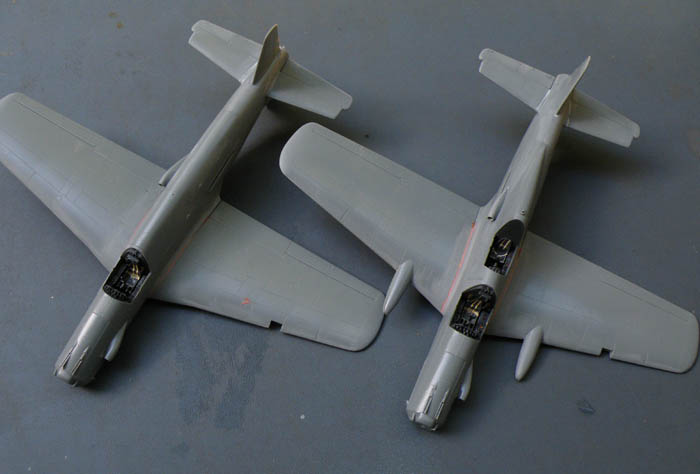
Matrixone
Noticed that you have the "B" wings on the 2 seater. :hmmm Where are you going with that? Really curious.
Thanks for looking!
Luiz,
Both Do 335s will start out with the official camouflage scheme but there will be some field applied changes made to them.
Paul,
NOW you point out that I goofed by putting the wrong wings on....no its not really a mistake, I'm just joking. :laugh:
The two seat trainer is being built as the Do 335B-10 advanced trainer.
The Do 335A-1 will also be a bit different than what you usually see, it will have different armament. :evil:
Matrixone
Luiz,
Both Do 335s will start out with the official camouflage scheme but there will be some field applied changes made to them.
Paul,
NOW you point out that I goofed by putting the wrong wings on....no its not really a mistake, I'm just joking. :laugh:
The two seat trainer is being built as the Do 335B-10 advanced trainer.
The Do 335A-1 will also be a bit different than what you usually see, it will have different armament. :evil:
Matrixone
Work on my other models has slowed but not stopped the progress on these two models.
Here are some of the landing gear doors after being painted silver. The interior of the landing gear doors and wheel wells on all known pre-production Do 335s were unpainted metal instead of being finished in RLM 02 and my models will be the same as the full size machines.
As can be seen in the image below one set of the main landing gear doors have the exterior also painted silver and that's because I intend to use the salt weathering technique on them to show these parts having massive paint chipping/flaking. Its rare to see paints on Luftwaffe aircraft not adhere well to the surface but it has happened before and I want the Do 335 trainer to look very well used and beaten up.
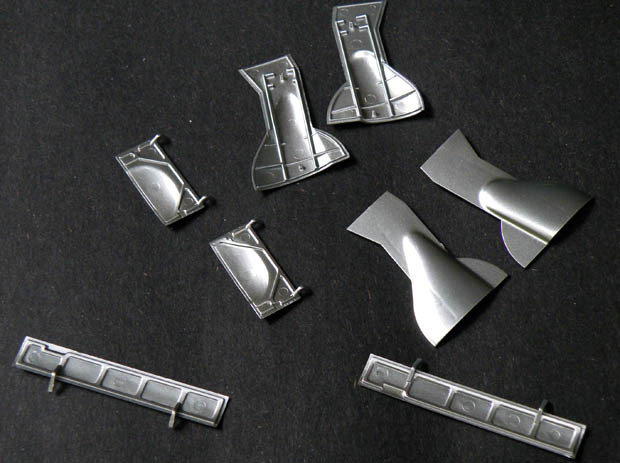
Matrixone
Here are some of the landing gear doors after being painted silver. The interior of the landing gear doors and wheel wells on all known pre-production Do 335s were unpainted metal instead of being finished in RLM 02 and my models will be the same as the full size machines.
As can be seen in the image below one set of the main landing gear doors have the exterior also painted silver and that's because I intend to use the salt weathering technique on them to show these parts having massive paint chipping/flaking. Its rare to see paints on Luftwaffe aircraft not adhere well to the surface but it has happened before and I want the Do 335 trainer to look very well used and beaten up.

Matrixone
Now that the Bf 109K-4 is 99% done I will turn more of my attention to the Dorniers.
Here is two of the landing gear doors after the salt weathering technique done on them. There will be even more paint chipping done to them later on with a silver artists pencil and silver paint. The brightness that is seen in the chipped areas will be greatly toned down after the flat clear coat is sprayed on.
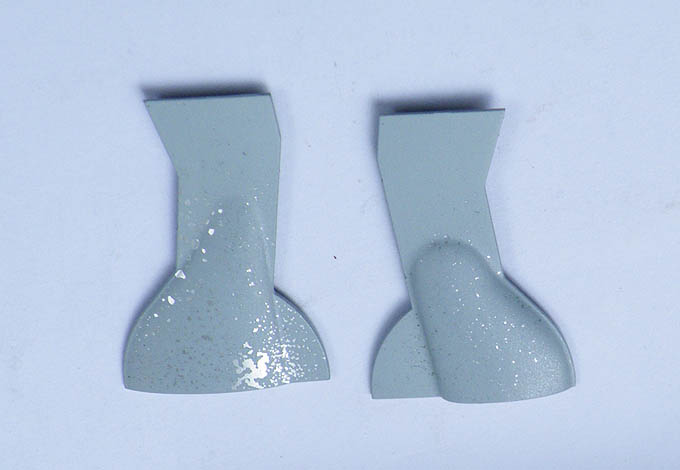
The pictures below show a painting/weathering test piece from an unused part from the kit of the Do 335 trainer and shows just how effective the salt weathering technique could be for weathering aircraft models, the guys that build armor make fantastic use out of this technique and its a shame its not more widely used by aircraft modelers especially for those that build late war Japanese aircraft.
These first two pictures show the part was painted dark green and some paint fading was done by misting on some lighter versions of the same green color in a random way. Silver paint was then sprayed on where I wanted the chipping to take place.
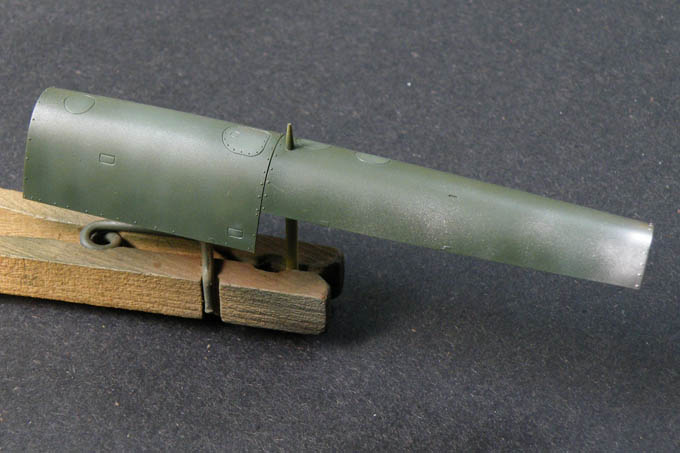
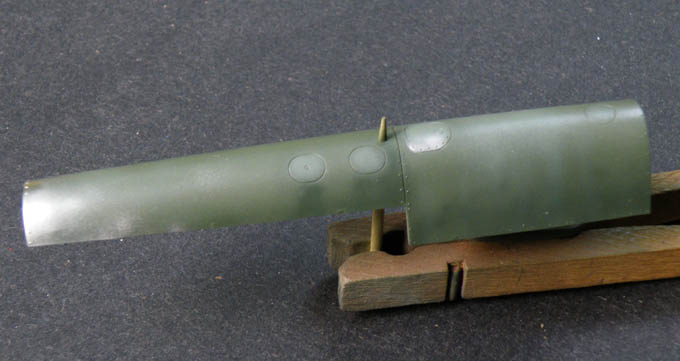
After the paint dried for a few hours some water was LIGHTLY misted on the part and then some salt was added and this was left to dry.
When I was sure the water was dry I went back with green paint and airbrushed it on top of the salt, when doing this do not use high PSI or the grains of salt might be blown off. After the green paint dried I used my fingers to wipe away salt to reveal the paint chipping effect.
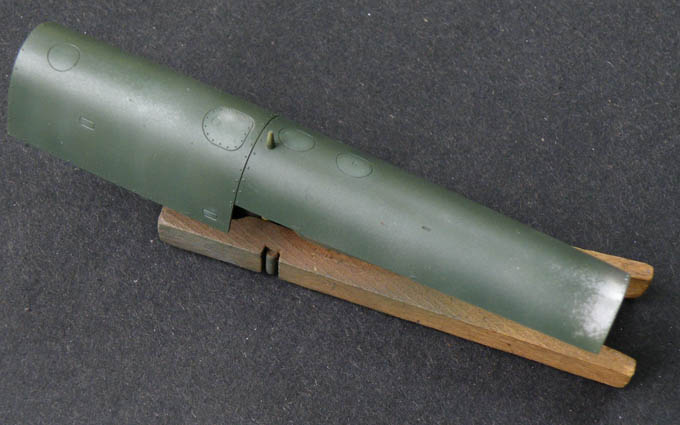
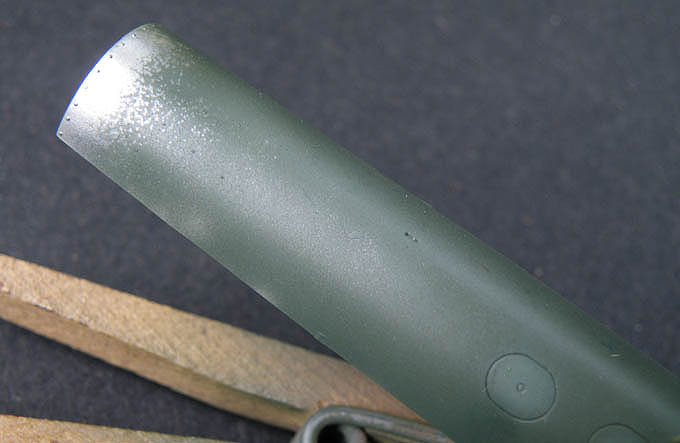

I only use enamel paint and had no problems with this weathering technique, most people that have done the salt weathering technique advise using acrylic paints but aside from the longer drying time of the enamel paint I think both types of paint could be used with success.
I will use this same test piece for practice on doing a heavily weathered example of the temporary winter white paint used on the Russian front in WWII.
Matrixone
Here is two of the landing gear doors after the salt weathering technique done on them. There will be even more paint chipping done to them later on with a silver artists pencil and silver paint. The brightness that is seen in the chipped areas will be greatly toned down after the flat clear coat is sprayed on.

The pictures below show a painting/weathering test piece from an unused part from the kit of the Do 335 trainer and shows just how effective the salt weathering technique could be for weathering aircraft models, the guys that build armor make fantastic use out of this technique and its a shame its not more widely used by aircraft modelers especially for those that build late war Japanese aircraft.
These first two pictures show the part was painted dark green and some paint fading was done by misting on some lighter versions of the same green color in a random way. Silver paint was then sprayed on where I wanted the chipping to take place.


After the paint dried for a few hours some water was LIGHTLY misted on the part and then some salt was added and this was left to dry.
When I was sure the water was dry I went back with green paint and airbrushed it on top of the salt, when doing this do not use high PSI or the grains of salt might be blown off. After the green paint dried I used my fingers to wipe away salt to reveal the paint chipping effect.



I only use enamel paint and had no problems with this weathering technique, most people that have done the salt weathering technique advise using acrylic paints but aside from the longer drying time of the enamel paint I think both types of paint could be used with success.
I will use this same test piece for practice on doing a heavily weathered example of the temporary winter white paint used on the Russian front in WWII.
Matrixone
NICE Chipshot! 
Thank you Bob!
More painting done on some of the Do 335 parts, the exterior of the landing gear doors were painted RLM 76, some highlights and paint fading were done on them but it may be hard to see in this image.
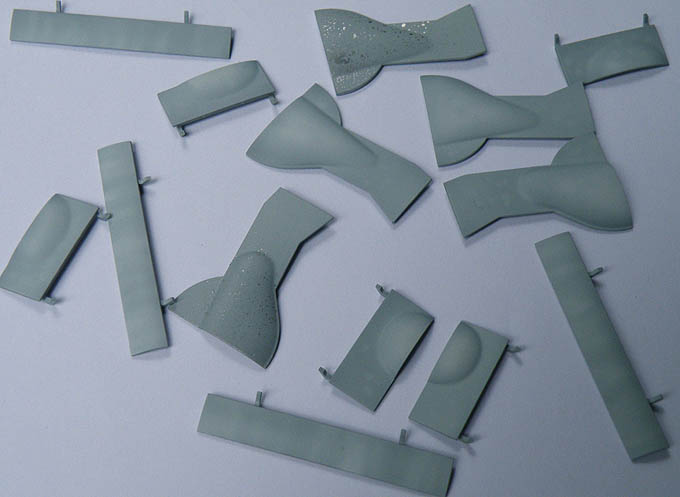
I did more weathering practice on the unused Do 335 part, this time I used the salt weathering technique to represent the temporary white paint used on aircraft during the winter on the Eastern front in WWII.
What I did here on this test piece would work quite well on the leading edges of wings and other high wear areas where the white paint would tend to wear off fairly soon.
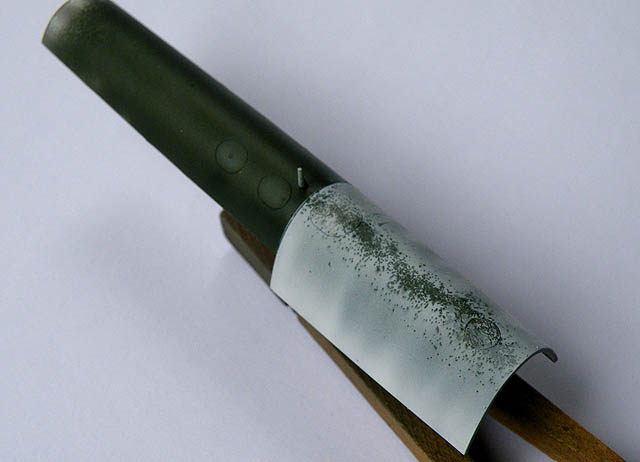
This side of the test piece was done with only the airbrush, dry brushing with oil paints to add some streaking effects would make this look much better.

The other side was given some light dry brushing with white enamel paint, the enamel paint worked okay but oil paint would be better and is much easier to work with.

Matrixone
More painting done on some of the Do 335 parts, the exterior of the landing gear doors were painted RLM 76, some highlights and paint fading were done on them but it may be hard to see in this image.

I did more weathering practice on the unused Do 335 part, this time I used the salt weathering technique to represent the temporary white paint used on aircraft during the winter on the Eastern front in WWII.
What I did here on this test piece would work quite well on the leading edges of wings and other high wear areas where the white paint would tend to wear off fairly soon.

This side of the test piece was done with only the airbrush, dry brushing with oil paints to add some streaking effects would make this look much better.

The other side was given some light dry brushing with white enamel paint, the enamel paint worked okay but oil paint would be better and is much easier to work with.

Matrixone
Thank you Luiz!
Its 2015 and we have a Do 335 sighting...
After losing interest in these models I have returned to them, some sanding was needed to smooth out the Mr. Surfacer on many of the joins and after doing so some paint was sprayed on to check for possible trouble spots, all looks good and after the model is washed again the gun sight will be added to the cockpit as well as the clear parts and then painting can begin. :woohoo:
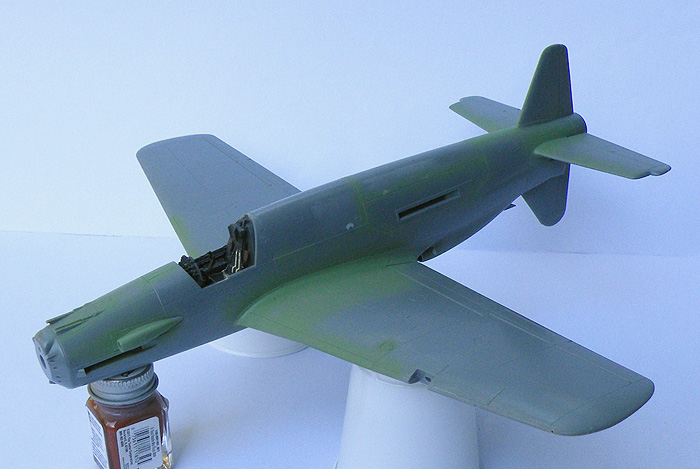

Matrixone
Its 2015 and we have a Do 335 sighting...
After losing interest in these models I have returned to them, some sanding was needed to smooth out the Mr. Surfacer on many of the joins and after doing so some paint was sprayed on to check for possible trouble spots, all looks good and after the model is washed again the gun sight will be added to the cockpit as well as the clear parts and then painting can begin. :woohoo:


Matrixone
phantom II
Master at Arms
I had the good fortune to see the 335 in person while at the Munich museum.
It's a very large bird but it sure does not shout exiting .
Cheers, Christian B)
It's a very large bird but it sure does not shout exiting .
Cheers, Christian B)
I've enjoyed reviewing this thread, Les- cheers! It does kinda break my heart to see those photos of all those 335's dumped and broken. The design was such a beautiful concept and the engineering was simply amazing. I'm glad to see this thread resurrected- your other builds have reached beautiful fruition, and now these birds can join your flock. As far as the salt technique goes, yours looks swell. I take it you're using it right out of the shaker? Kosher salt (take that, you nazi bastards!) has much more irregular granules- you might want to give that a try. 
Cheers!
chuk
Cheers!
chuk
Kosher salt (take that, you nazi bastards!)
Got me laughin' after a rough day with turnbuckles.

Love this bird Les, just have to wonder what would have been the Allied answer to it, if anything.
Thanks guys! 
Chuck,
In my painting experiment I used popcorn salt because it was very fine grained and wanted to see how it would work, if I were to use this technique on an actual model I would like to use a mix of fine and large to give it a more random and natural look. There will be other painting experiments done in the near future in preparation for the Ta 183 painting/weathering.
Some actual painting has been done on one of the Do 335's, RLM 66 was sprayed on the canopy frames and a light colored base coat was sprayed on the lower surfaces followed by some pre-shading. I will wait a day and then spray over much of the pre-shading with highly thinned RLM 76.
If the base coat you see here looks like RAF Duck Egg Blue you are correct, its an old bottle of paint I wanted to get some use out of it before it dries out.
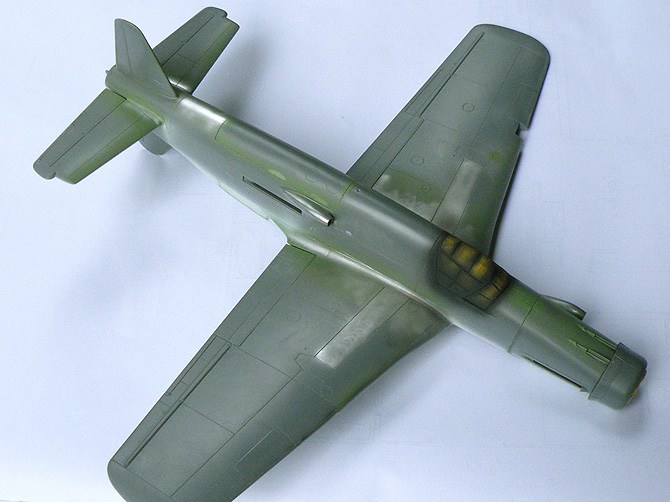

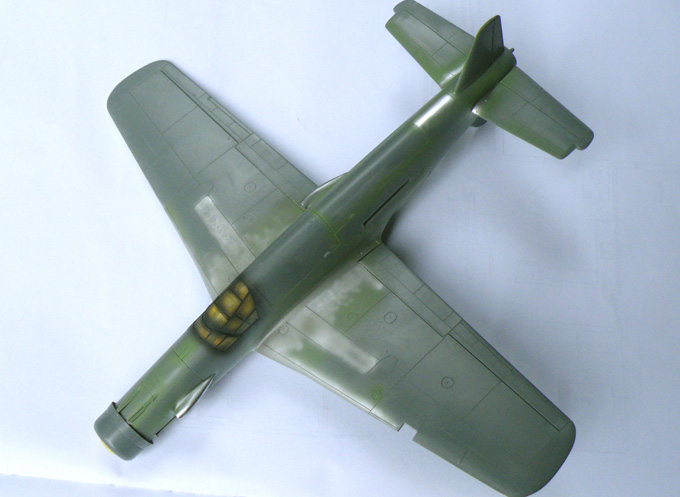
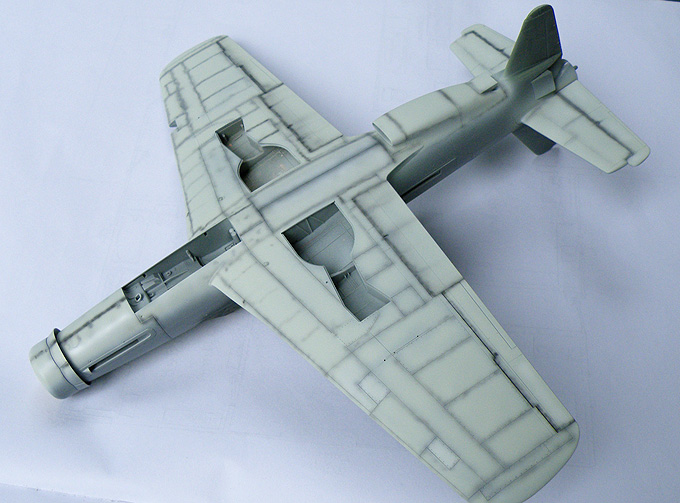
Matrixone
Chuck,
In my painting experiment I used popcorn salt because it was very fine grained and wanted to see how it would work, if I were to use this technique on an actual model I would like to use a mix of fine and large to give it a more random and natural look. There will be other painting experiments done in the near future in preparation for the Ta 183 painting/weathering.
Some actual painting has been done on one of the Do 335's, RLM 66 was sprayed on the canopy frames and a light colored base coat was sprayed on the lower surfaces followed by some pre-shading. I will wait a day and then spray over much of the pre-shading with highly thinned RLM 76.
If the base coat you see here looks like RAF Duck Egg Blue you are correct, its an old bottle of paint I wanted to get some use out of it before it dries out.




Matrixone
Similar threads
- Replies
- 104
- Views
- 15K
- Replies
- 50
- Views
- 5K
- Replies
- 50
- Views
- 6K


